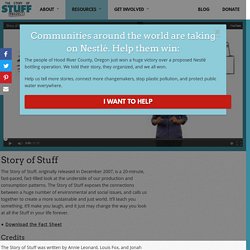

Space beautiful violence. Io9. Science Standards Are True to NRC Framework, Reviewers Conclude - Curriculum Matters. Why Don't You Try This?: It’s Not a Fairytale: Seattle to Build Nation’s First Food Forest. Seafood Decision Guide. Why Is The Sky Blue? The Psychology of Music. Greenhouse Gas Reporting Program Home. On October 23, 2013, EPA's Greenhouse Gas Reporting Program released its third year of emissions data, including information from facilities in 41 source categories.
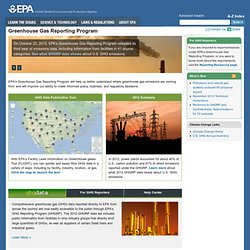
See what GHGRP data shows about U.S. GHG emissions. If you report to the Greenhouse Gas Reporting Program, or you think you might be required to, visit the For Reporters page for resources, tools, and training opportunities. EPA’s Greenhouse Gas Reporting Program will help us better understand where greenhouse gas emissions are coming from and will improve our ability to make informed policy, business, and regulatory decisions.
GHG Data Publication Tool With EPA’s Facility Level Information on GreenHouse gases Tool (FLIGHT), you can quickly and easily filter GHG data in a variety of ways, including by facility, industry, location, or gas. 2012 Summary. NASA - Spot The Station. Measuring The Universe. Browse PhET contributions. USFIRST.org. Browse Archived Questions and Answers (Everyday Mysteries: Fun Science Facts from the Library of Congress) Food Science Videos and Articles from Season 12 of America's Test Kitchen. Jay Mark Johnson’s very unusual camera emphasizes time over space. Jay Mark Johnson.

The abstract-seeming images here are not the result of some wacky Photoshopping. Jay Mark Johnson’s photos are actually incredibly precise. The reason they look like this is because he uses a slit camera that emphasizes time over space. 'Embodied Learning' Blends Movement, Computer Interaction. Hands-on Activities for Teaching Biology to High School or Middle School Students.
By Drs.
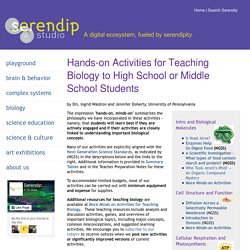
Ingrid Waldron and Jennifer Doherty, University of Pennsylvania The expression "hands-on, minds-on" summarizes the philosophy we have incorporated in these activities - namely, that students will learn best if they are actively engaged and if their activities are closely linked to understanding important biological concepts. Take Two: 7 Adaptive Reuse Projects We Love - Ideas. Amazing Facts That Will Blow Your Mind Video. Human Anatomy Model, Anatomy Chart, Anatomical Chart. Seth Shostak: ET is (probably) out there. The Best Sites To Learn About Robots. I’ve found that students of all ages are interested in robots.

Given that interest, I thought it would be a good idea to bring together a number of resources about them that are accessible to English Language Learners. They make for high interest reading material, and provide good images to write about, too. The videos provide good listening practice. Here are my choices for The Best Sites To Learn About Robots: The Boston Globe’s Big Picture has a nice series of photos of Robots. The Big Picture also has another series of similar images called More Robots. The Tech Museum has a nice group of robot-related activities. Robotics Academy. Robotics - Educators : 6th to 8th Grade. The Physics Classroom. PBL physics. Teaching Green Concepts at Green Boot Camp.
STEM Teaching | News Teachers Learn New Methods of Teaching Green Concepts at Green Boot Camp A group of 70 middle school teachers from around the world gathered in San Diego this month to participate in a hands-on, interactive workshop about methods for teaching energy, sustainability, and environmental concepts.
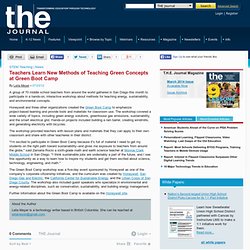
Honeywell and three other organizations created the Green Boot Camp to emphasize project-based learning and provide tools and materials for classroom use. The workshop covered a wide variety of topics, including green energy solutions, greenhouse gas emissions, sustainability, and the smart electrical grid. Hands-on projects included building a rain barrel, creating windmills, and generating electricity with bicycles. The workshop provided teachers with lesson plans and materials that they can apply to their own classroom and share with other teacheres in their district.
Map of Life. 'Hunger Games' Science: Investigating Genetically Engineered Organisms. Overview | What lessons can we learn about genetically engineered organisms from the example of the jabberjay, a fictional bird in the movie “The Hunger Games”?

In this lesson, students discuss the definition of genetically modified organisms, learn about the risks and benefits of research on G.M.O.’s, explore the growing do-it-yourself biology movement, and develop proposals seeking to either restrict or permit research into genetically modifying the avian flu virus. Materials | Computers with Internet access Warm-up | Before students arrive, write the following prompt on the board: In the movie “The Hunger Games,” the Capitol (a term used to refer to what we would call the government) produced genetically enhanced birds called jabberjays to spy on rebels.
Kids. Homework Help K-4 Kids Do It Yourself Games.
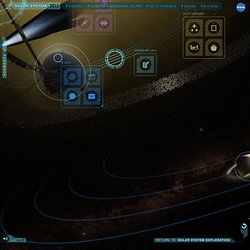
Infographics. "FarmVille" vs. Real Farms [INFOGRAPHIC] With all those millions of Facebook and iPhone users tending to virtual crops and sharing them with friends, have you ever wondered how their toils stack up against actual real-life farmers?
!["FarmVille" vs. Real Farms [INFOGRAPHIC]](http://cdn.pearltrees.com/s/pic/th/farmville-farms-infographic-5679310)
Story of Stuff. The Story of Stuff, originally released in December 2007, is a 20-minute, fast-paced, fact-filled look at the underside of our production and consumption patterns.
